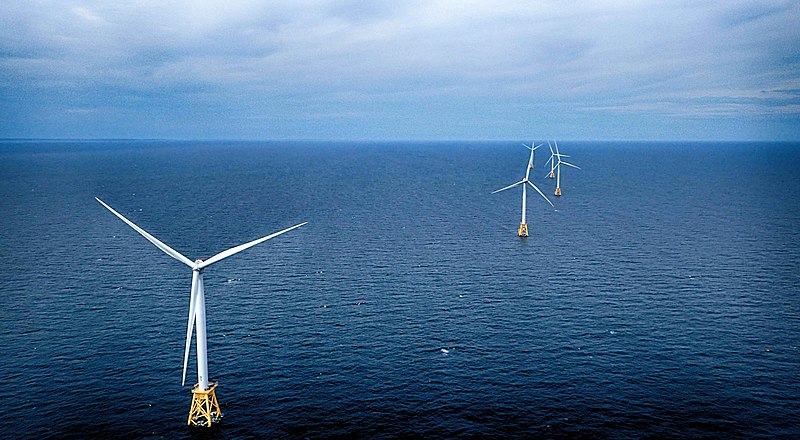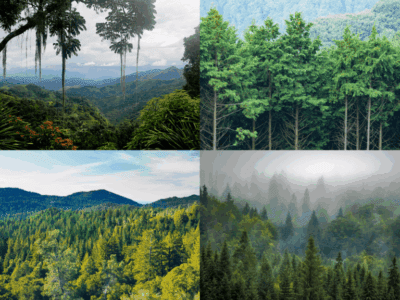Stakeholder Engagement in California Offshore Wind Development
State leaders have an opportunity to forge a national example on stakeholder engagement and energy justice.

As California continues to develop plans for floating offshore wind (OSW) implementation, state leaders have an opportunity to forge a national example on stakeholder engagement and energy justice. California can achieve this, not just by (for example) incorporating environmental justice (EJ) principles into agency analysis and planning or by increasing consultation with tribal entities, but by ensuring — and ensuring funding for — a seat at planning and implementation tables for communities (including frontline, tribal, fishing, and EJ communities) that will be most affected by offshore wind development. This kind of deep partnership with affected communities is important not just to avoid litigation and prevent project delays, but also to fulfill the promise of green jobs for Californians, to inform community benefits agreements, and to lessen the need for subsequent economic, environmental, and social mitigation measures.
Representatives from many affected communities have called for new approaches to offshore wind stakeholder engagement in numerous comments posted to federal and state agency dockets and in oral public workshop testimony. Advocates and community representatives have also expressed their ideas and needs in CLEE’s 2022 OSW stakeholder forums.
Last year, CLEE held a series of four OSW convenings with over 100 participants to provide space for stakeholder dialogue. Attendees included federal, state, local, and tribal government representatives as well as wind developers, environmental justice organizations, environmental advocacy groups, transmission experts, and representatives from the fishing industry, labor unions, and ports. The insights that surfaced from community representatives during these sessions reflect the priorities and concerns of some of those most impacted by California’s accelerating OSW industry. This blog post summarizes those insights and provides some guidance for policy makers seeking to enhance stakeholder outreach (read the full CLEE whitepaper outlining stakeholder comments here).

As the comments reveal, community representatives and advocates engaged in the offshore wind process do not just seek an opportunity to give input to developers and agency staff. They seek —and deserve — a place at decision-making tables, and in relevant cases, compensation to fund ongoing participation in development and monitoring processes for offshore wind. (Many community representatives have noted that they work fulltime in non-OSW related jobs and that responding to developer, agency, and other requests for input and tracking, commenting on, and attending offshore wind proceedings adds another unpaid job to their already fulltime load). Community benefits agreements (CBAs), for which developers received bid credits in the December 2022 auction (see the Final Sale Notice), may provide one vehicle for engagement and compensation funds. As another example, North Coast advocates and experts have proposed resource sharing of federal auction proceeds as a way to right historical wrongs and fund targeted benefits for affected tribal communities, as well as adaptive environmental management and monitoring.
In 2022, both federal and state agencies involved in California offshore wind endeavored to increase stakeholder outreach efforts. The California Energy Commission (CEC) (the lead state agency on offshore wind), hosted 18 webinars and workshops and agency staff stated at several events that they were planning, or had already started, staff outreach tours to key stakeholder groups. The Bureau of Ocean Energy Management (BOEM), the relevant federal agency, hosted three California-specific public meetings in 2022. These included a pre-auction orientation session for developers, one meeting (with two alternate time slots) for the Morro Bay Environmental Assessment (EA), and one meeting (with two alternate time slots) for the Humboldt Environmental Assessment (EA). The agency also convened the BOEM California Intergovernmental Renewable Energy Task Force last year, a meeting which was open to the public.
These efforts should not be downplayed, especially given that both agencies face significant staff and budgetary constraints. And yet, beyond lessee Communication Plans and CEQA and NEPA required processes, it is not clear what 2023 and beyond will bring in the way of stakeholder engagement.
It is also not apparent whether either CEC or BOEM has begun to transform stakeholder engagement processes to better reflect stakeholder needs as expressed last year through written public comments, public testimony at workshops, and in CLEE’s convenings. Experimenting with new engagement strategies by incorporating concepts of public policy co-design[1] and co-produced governance could produce a new kind of offshore wind development process that responds to stakeholder comments. Agencies could, for example, work with stakeholders early in the OSW planning process on least conflict planning to determine future OSW energy areas. As mentioned above, agencies could also explore resource sharing.
Increased stakeholder involvement is not just crucial to ensure that offshore wind development proceeds without delay, to fulfill the promise of OSW development, or to lessen the need for subsequent economic, environmental, and social mitigation measures — it is also important to right the wrongs of past development in regions like Humboldt County and past fossil fuel industry practices in the Central Coast. OSW development has the potential to be a boon for California communities and decarbonization goals, if state and federal agencies continue to evolve their approach to stakeholder engagement by responding to the stakeholder needs outlined here, and if developers sign CBAs that reflect these community needs. We hope that the stakeholder comments, concerns, and insights raised in CLEE’s 2022 convenings, including the ones highlighted in this article, are closely considered—and acted upon—as California pivots to offshore wind implementation planning and implementation in 2023.
For other CLEE offshore wind posts, see California Offshore Wind Auction Results in Five Provisional Winners and The Inflation Reduction Act and California Offshore Wind.
========================
[1] See also, Blomkamp, Emma. “The Promise of Co-Design for Public Policy.” Australian journal of public administration 77.4 (2018): 729–743, available at https://www.academia.edu/35713240/The_Promise_of_Co-Design_for_Public_Policy.
Reader Comments
One Reply to “Stakeholder Engagement in California Offshore Wind Development”
Comments are closed.






I am leery about the identification of stakeholders, placing the rights of members of the public secondary to those of members of the self-identified stakeholders. What happens to the public’s right to fish or engage in recreational activity on navigable waters when stakeholder tribe takes a superior role in decision making When we talk about sovereign-to-sovereign agreements and having a seat at the table where the decision is made, that is what we are talking about. We are talking about public officials forsaking their duties to the public in favor of serving private interests